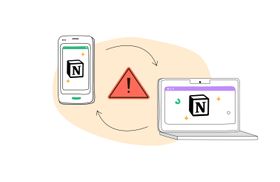5 Ways to Align Internal & External Communications (+Examples)
Updated February 24, 2023

Effective communication is a critical component of any successful organization. Both internal and external communications aim to deliver a clear message and present the company in a certain way. Internal communications target employees, while external communications target customers, partners, and the general public. It is important to ensure that these two types of communication are aligned because inconsistency can confuse and undermine your brand.
When internal and external communications are not aligned, it sends mixed messages to your employees and customers. For example, if your internal communications say that your company values customer service, but your external communications portray a different message, it can create confusion and erode trust.
- Internal communication is often more frequent, less formal, and more extensive. Every department in the organization is involved, and the goal is to get information flowing between teams to make their work more effective. Examples of good internal communications include regular meetings, managers giving coaching, and setting up team chat rooms.
- External communication involves everything to do with the brand, product, and results, and communication is customer acquisition and retention, and it usually falls to marketing and sales teams. Examples of good external communication include a company blog, social media messaging, and company announcements communicated by a newsletter.
By aligning your internal and external communications, you can ensure consistency in messaging and build a strong brand. In the following sections, we'll discuss five strategies to help you achieve this alignment.
1. Make a Plan
To align your internal and external communications, you need to put together an action plan that focuses on how to achieve this alignment. This plan should outline the strategies and materials that will be required and the timeline for implementing the necessary changes. It is important to keep in mind the benefits that the company stands to gain from this alignment, such as increased revenue and efficiency.
Aligning internal and external communications takes time and resources, so ensuring your plan is well-thought-out and realistic is important. The plan should include an assessment of the current state of internal and external communications and a roadmap for achieving the desired alignment. Consider involving stakeholders from across the organization in the planning process to ensure that everyone's needs and perspectives are taken into account.
Example: Consult with executive-level managers before informing different departments about upcoming changes. This can help ensure that the plan is well-aligned with the company's overall strategic objectives and that it has the necessary buy-in and support from key decision-makers. By involving executives in the planning process, you can also benefit from their expertise and guidance in implementing the required changes.
✶ Learn about: Federated Search and its benefits
2. Create Brand Guidelines
Brand guidelines are rules and standards that communicate how your brand should be represented to the world. They help businesses ensure consistency in messaging and demonstrate what the company stands for. To align your internal and external communications, you should prepare materials that outline the approved ways to talk about the company. These materials can include brand messaging, style guides, and tone of voice guidelines.
Once you have created these materials, it is important to share them with other departments and new employees during onboarding and to remind everyone to use them regularly. Ensuring that all employees follow the same brand guidelines can help maintain a consistent brand image and messaging. This can be especially important in external communications, where a misaligned message can cause confusion and damage the company's reputation.
Example: Create an intranet page that includes links to the company's social media channels and describes the company in one sentence, paragraph, or page. This page can also provide guidance on how to communicate with customers, partners, and other stakeholders in a way that is consistent with the company's brand. By providing a central location for brand guidelines, you can help ensure that all employees have easy access to the information they need to communicate effectively and consistently.
3. Encourage Your Employees to Become Brand Ambassadors
Encouraging employees to become brand ambassadors can effectively promote a company and its products or services to a broader audience. By leveraging the networks and influence of employees, companies can increase brand awareness and even boost sales.
An employee brand ambassador promotes a brand to their network and works collaboratively with the company to increase brand visibility. These individuals are often highly engaged with the company and feel invested in its success, making them ideal advocates for the brand.
Collaboration between employees and the company is also key to creating successful brand ambassadors. By working together, employees can provide valuable insights into their networks and help the company tailor its messaging to resonate with those audiences. In turn, the company can provide employees with the tools and resources they need to be effective brand ambassadors.
Ultimately, encouraging employees to become brand ambassadors can be a win-win for both the company and its employees. By promoting the brand to their networks, employees can feel more invested in the company's success, while the company can benefit from increased visibility and potentially boosted sales.
Example: Connect employees to the brand and provide them with the training and information they need to communicate the company's values effectively. This can include providing employees with training days, product prototypes, case studies, and other resources to help them become more familiar with the company's offerings.
4. Identify Stakeholders
When it comes to aligning messaging and developing materials, knowing which teams and individuals you must cooperate with will speed up the process. These are the stakeholders - people who your initiative will influence or who will have an impact on it.
For instance, if you're launching a new product, you must align and collaborate with everyone involved—your sales team, product team, marketing, and customer service—about its features and benefits. The faster you identify the stakeholders and establish a clear two-way flow of information between the relevant departments, the faster you can create on-brand content that can be reused and repurposed endlessly.
Example: If you're working on recruitment materials, involve marketing and HR. If new features are launching, seek advice from the product, marketing, sales, and customer success teams. Identifying a way for information to flow freely between these departments will help ensure everyone is up-to-speed and stays engaged, making collaboration much easier. Communication platforms can also help you share relevant content, so those involved can use it easily.
✶ Struggling with Slack search? Unleash can help with that
5. Use the Right Tools
Choosing the most appropriate channels and tools for internal and external communication management is essential. It helps maintain consistency and promote your values to your stakeholders.
Example: When it comes to internal communication, platforms that facilitate remote team collaboration and communication, such as Slack, can be highly effective. However, the search function on Slack can be limiting. That's why integrating it with a third-party integration like Unleash is so perfect because it completely obviates the need for Slack's native search function. Unleash is simple and easy to use and can search every folder and application to streamline productivity and help teams find the information they need quickly.
Aligning Your Communications for Success
Aligning internal and external communications is crucial for maintaining consistency and promoting a strong brand image. You can achieve a more seamless and effective communication strategy by creating a plan, establishing brand guidelines, encouraging employee engagement, collaborating with relevant departments, and using the right tools. Your organization can build trust, loyalty, and a better overall reputation with a unified message and approach.





